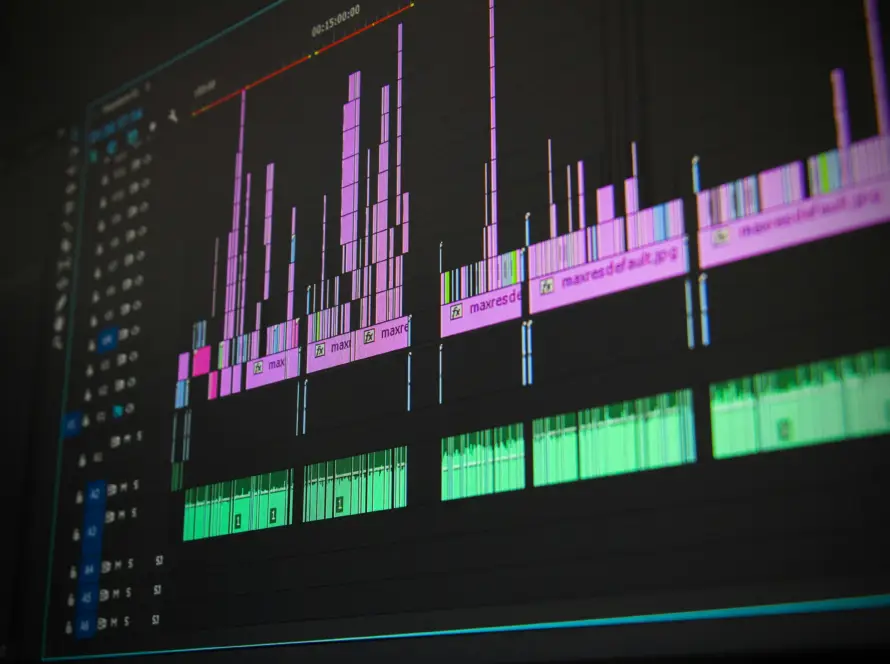Generated by Contentify AI
- The Importance of Visual Communication
- The Science Behind Color Psychology
- Cognitive Effects of Visual Elements
- Impact of Typography on Perception

Key Takeaways
- Graphics can evoke emotional responses in viewers
- Color choice in graphics can influence perception and mood
- Graphics should be designed with the target audience in mind
The Importance of Visual Communication
In today’s digital age, visual communication has surged to the forefront of how we convey messages, ideas, and emotions. Understanding the psychology of graphics is crucial because it taps into the visceral reactions we have to visual stimuli. We process images significantly faster than text, making graphics an indispensable tool in capturing attention and communicating effectively. This mode of communication transcends linguistic barriers, enabling a universal language that can be understood regardless of one’s native tongue. Visuals can evoke emotions, create connections, and drive engagements in ways words alone cannot, which is why they play a pivotal role in branding, marketing, and media. The ability to skillfully integrate graphics into an array of platforms and mediums can dramatically enhance the clarity, impact, and reach of a message, making the mastery of visual communication skills essential for anyone looking to convey their ideas compellingly in the digital landscape.
The Science Behind Color Psychology
Delving into the science behind color psychology highlights the intricate ways in which colors influence our perception, emotions, and actions. This aspect is a cornerstone in understanding the psychology of graphics, as colors are not merely aesthetic choices but powerful tools that communicate and resonate on a subconscious level. Each color carries its own psychological properties and associations that can significantly impact the viewer’s mood, decision-making process, and interpretation of the visual content.
For instance, the color red is often associated with energy, passion, and urgency, making it an effective choice for call-to-action buttons and sale announcements. Blue, on the other hand, is perceived as trustworthy and calming, which is why it is frequently used by financial and health care institutions to evoke a sense of reliability and serenity. The strategic use of color can enhance brand identity, improve user experience, and influence consumer behavior.
Moreover, color psychology goes beyond the individual hues, as the combination of colors and their saturation and brightness levels also play a crucial role. Understanding the psychological effects of these combinations can help in the creation of more compelling and effective graphics. By leveraging the science behind color psychology, designers and marketers can craft visuals that not only capture attention but also communicate the intended message and evoke the desired emotional response. This understanding allows for a more nuanced and sophisticated approach to graphic design, where color choices are made with both aesthetic appeal and psychological impact in mind.
Cognitive Effects of Visual Elements
The cognitive effects of visual elements play a pivotal role in understanding the psychology of graphics, as they directly influence how information is processed, understood, and retained by the viewer. Graphics harness the power of visual learning, tapping into the brain’s ability to decode and comprehend visual information swiftly and efficiently. This accelerates comprehension and aids in the easier recall of information, making visuals an essential component in educational materials, marketing campaigns, and user interfaces.
Visual elements such as images, icons, and charts facilitate pattern recognition and make complex data accessible and digestible. They break down barriers of textual density, guiding the viewer through content in a structured and engaging manner. This not only enhances the user’s experience but also bolsters the communication of key messages and concepts. For example, infographics can transform a lengthy report into an enticing visual summary, making the key takeaways instantly recognizable at a glance.
Moreover, the arrangement and organization of visual elements within a design can significantly impact cognitive load—the amount of mental effort being used in the working memory. Good design practices aim to minimize cognitive load, making information processing smoother and more efficient. This is achieved by adhering to principles of clarity, consistency, and simplicity, ensuring that visuals complement rather than complicate the message.
In essence, understanding the psychology of graphics means recognizing the cognitive effects visual elements have on perception and information processing. It’s about crafting visuals that not only capture attention but also enhance understanding and retention, ultimately making communication more effective. This insight is invaluable for designers, educators, and communicators alike, as it underpins the creation of visuals that are not only aesthetically pleasing but also cognitively engaging.
Related articles
Impact of Typography on Perception
The intricate relationship between typography and perception is a fascinating aspect when it comes to understanding the psychology of graphics. Typography, the art and technique of arranging type, goes beyond the mere selection of fonts; it involves the careful manipulation of letter spacing, line length, and weight to optimize readability and convey the intended emotional tone of the text. This element of graphic design has a profound impact on how information is interpreted and how it influences the viewer’s feelings and behaviors.
Research suggests that the choice of typeface can significantly affect the reader’s perception, making the message appear more serious, humorous, formal, or casual. For instance, serif fonts, known for their decorative features at the ends of strokes, are often associated with reliability and tradition, making them a popular choice for established institutions like newspapers and universities. On the other hand, sans-serif fonts, characterized by their clean and straightforward lines, are perceived as modern and approachable, often used in digital platforms to enhance screen readability.
Furthermore, the psychology behind typography extends to how text is laid out on a page or screen. The density of text, line spacing, and alignment can influence how easy or difficult the content is to read, which in turn affects the viewer’s engagement and comprehension. Well-designed typography can guide the reader’s eye in a logical flow, making the consumption of information not only effortless but also visually pleasing.
Moreover, contrasting typography styles can be utilized to draw attention to key parts of a message or to create a hierarchy of information, allowing readers to easily distinguish between primary and secondary content. This strategic use of typography enhances the effectiveness of visual communication, ensuring that the most important messages stand out and are remembered.
In the realm of marketing and branding, understanding the psychology of graphics, including typography, is essential. The typographic choices made by a brand can convey personality and values without a single word being read consciously. This subconscious influence on perception can significantly affect brand recognition and consumer trust.
In conclusion, the impact of typography on perception is a critical consideration in graphic design. By understanding the psychology of graphics, designers can make informed decisions about typography that enhance readability, convey the intended message, and evoke the desired emotional response. This not only improves the aesthetic appeal of the visual content but also its effectiveness in communication.






